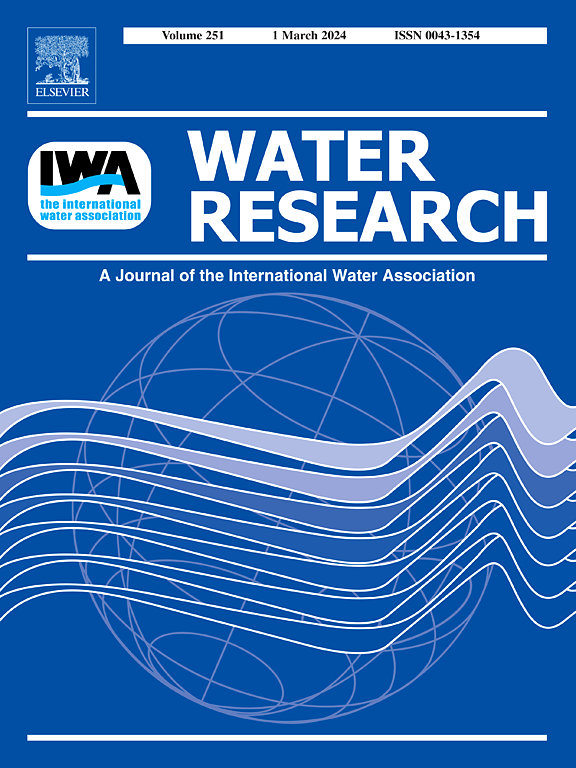Ecotoxicity of Plastic Leachates on Aquatic Plants: Multi-Factor Multi-Effect Meta-Analysis
IF 11.4
1区 环境科学与生态学
Q1 ENGINEERING, ENVIRONMENTAL
引用次数: 0
Abstract
Despite heightened awareness of plastic contamination, a comprehensive understanding of the ecotoxicity of plastic leachates remains challenging due to discrepancies in previous findings and complexities in the effects of myriad factors. Herein, we proposed a multi-factor multi-effect plastic-leachate ecotoxicology meta-analysis approach (PLEM) to elucidate the ecotoxicity of plastic leachates on aquatic plants. To distinguish the leachate toxicity from the general effects of leachates and plastic particles, the previous studies on the effects of leachate stricto sensu (i.e., without particles) were exclusively encompassed. A total of 890 data points explored in 18 previous articles were systematically analyzed. Our findings revealed that plastic leachates negatively affected aquatic plants' growth (31%) and photosynthesis (13%). These toxic effects were influenced by multifaced factors including plastic characteristics, leaching conditions, and plant species. Polyvinyl chloride leachates exhibited the highest toxicity among different polymers. Marine species showed greater susceptibility than freshwater species. Surprisingly, leachates from centimeter-sized plastics exhibit higher toxicity than those from nanometer, micrometer, and millimeter-sized plastics. These findings underscore the toxicity of plastic leachates on aquatic plants should be more systematically assessed using standardized laboratory methods and considering multi-factors. This study offers a valuable insight into the toxic mechanism of plastic leachates and plastic contamination.

塑料渗滤液对水生植物的生态毒性:多因素多效应 Meta 分析
尽管人们对塑料污染的认识有所提高,但由于以往的研究结果存在差异,而且多种因素的影响错综复杂,因此全面了解塑料浸出物的生态毒性仍然具有挑战性。在此,我们提出了一种多因素多效应塑料渗滤液生态毒理学荟萃分析方法(PLEM),以阐明塑料渗滤液对水生植物的生态毒性。为了将沥滤液的毒性与沥滤液和塑料微粒的一般影响区分开来,以往关于沥滤液严格意义上的影响(即不含微粒)的研究都被囊括在内。我们对之前 18 篇文章中探讨的 890 个数据点进行了系统分析。我们的研究结果表明,塑料沥滤液对水生植物的生长(31%)和光合作用(13%)产生了负面影响。这些毒性效应受到塑料特性、沥滤条件和植物种类等多方面因素的影响。在各种聚合物中,聚氯乙烯沥滤液的毒性最高。海洋物种比淡水物种更容易受到影响。令人惊讶的是,厘米级塑料的浸出物比纳米级、微米级和毫米级塑料的浸出物毒性更高。这些发现强调,应采用标准化的实验室方法并考虑多种因素,对塑料浸出物对水生植物的毒性进行更系统的评估。这项研究为了解塑料浸出物和塑料污染的毒性机理提供了宝贵的视角。
本文章由计算机程序翻译,如有差异,请以英文原文为准。
求助全文
约1分钟内获得全文
求助全文
来源期刊

Water Research
环境科学-工程:环境
CiteScore
20.80
自引率
9.40%
发文量
1307
审稿时长
38 days
期刊介绍:
Water Research, along with its open access companion journal Water Research X, serves as a platform for publishing original research papers covering various aspects of the science and technology related to the anthropogenic water cycle, water quality, and its management worldwide. The audience targeted by the journal comprises biologists, chemical engineers, chemists, civil engineers, environmental engineers, limnologists, and microbiologists. The scope of the journal include:
•Treatment processes for water and wastewaters (municipal, agricultural, industrial, and on-site treatment), including resource recovery and residuals management;
•Urban hydrology including sewer systems, stormwater management, and green infrastructure;
•Drinking water treatment and distribution;
•Potable and non-potable water reuse;
•Sanitation, public health, and risk assessment;
•Anaerobic digestion, solid and hazardous waste management, including source characterization and the effects and control of leachates and gaseous emissions;
•Contaminants (chemical, microbial, anthropogenic particles such as nanoparticles or microplastics) and related water quality sensing, monitoring, fate, and assessment;
•Anthropogenic impacts on inland, tidal, coastal and urban waters, focusing on surface and ground waters, and point and non-point sources of pollution;
•Environmental restoration, linked to surface water, groundwater and groundwater remediation;
•Analysis of the interfaces between sediments and water, and between water and atmosphere, focusing specifically on anthropogenic impacts;
•Mathematical modelling, systems analysis, machine learning, and beneficial use of big data related to the anthropogenic water cycle;
•Socio-economic, policy, and regulations studies.
 求助内容:
求助内容: 应助结果提醒方式:
应助结果提醒方式:


